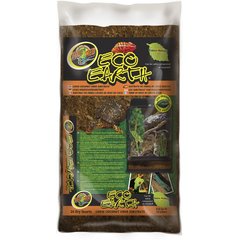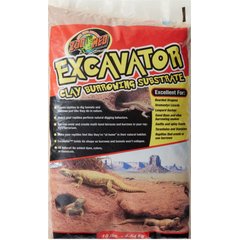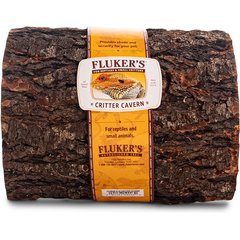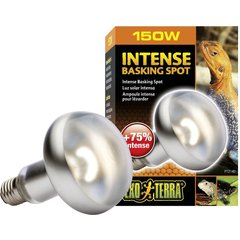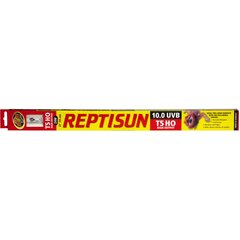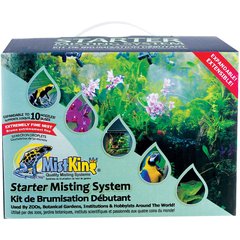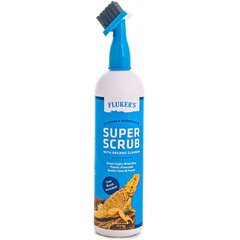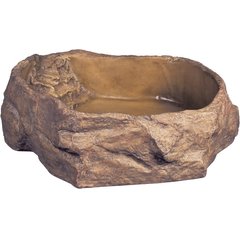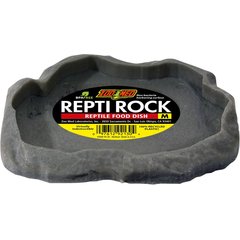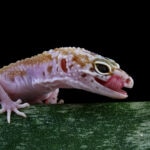Pet Lizards 101: How To Take Care of a Lizard
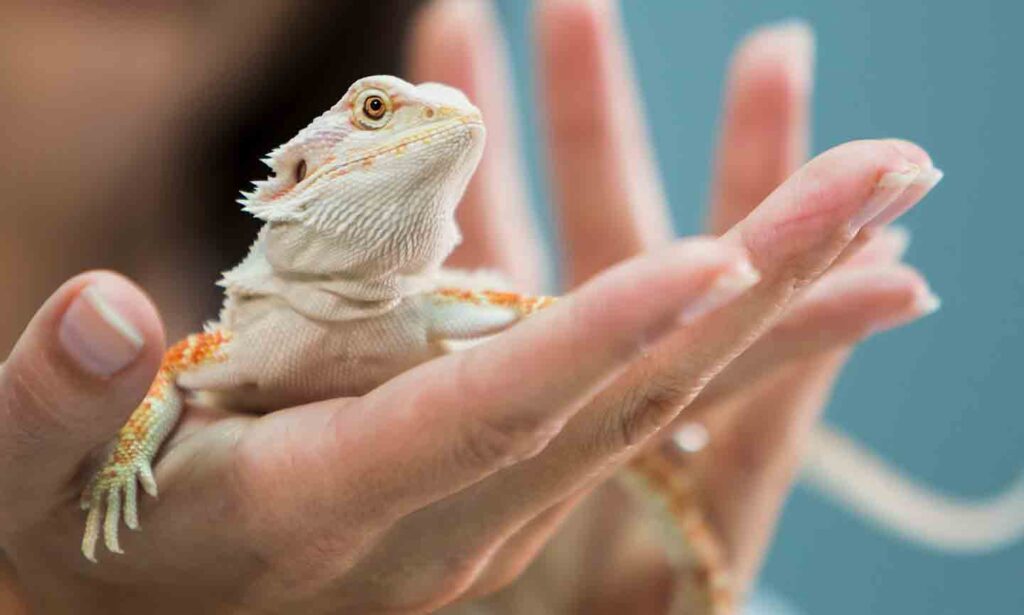
Photo by kali9/iStock/Getty Images Plus
Welcome to the wonderful world of lizard keeping, a uniquely rewarding experience that’s ripe with bonding opportunities, low-maintenance care and exciting, educational (and sometimes surprising!) adventures.
“Owning a pet lizard is an experience that can offer just as many joys as any other pet you can think of,” says Micah Woods, DVM, an exotic pets veterinarian at Ooltewah Veterinary Hospital in Chattanooga, Tennessee. “For many, it is shocking to find out how personable they are, and lizards seem to develop a set routine of behavior with many owners.”
Whether you’re curious about keeping a smiling leopard gecko, a color-changing chameleon or a handsome iguana, we’re outlining everything beginners need to know about lizard care.
Fun Lizard Facts
- Most pet lizards range from 5 inches to 24 inches long.
- Lizards’ lifespans vary, but in general, these pets live between 5 and 20 years.
- Geckos can climb walls and ceilings thanks to their sticky feet.
- Some lizards have a parietal eye (referred to as the “third eye”), a light-sensitive organ on the top of their head.
- Lizard lost their tail? Many species, including geckos and bearded dragons, have the ability to regenerate a new one.
- Some lizard species communicate with each other by doing “push-ups,” aka raising and lowering their body using their front legs.
- Like snakes, lizards shed their skin as they grow, a process referred to as molting.
Lizard Supply Checklist
- Terrarium
- Bedding/substrate
- Hiding or burrowing area
- Heat lamp(s)
- Basking spot
- UVB light
- Water feature
- Thermometer
- Humidity gauge
- Pet food (according to species)
- Supplements (based on veterinary recommendations)
- Shallow water dish
- Fresh water

SomeSense/iStock/Getty Images Plus
Creating the Perfect Habitat for Your Pet Lizard
Creating a terrarium for your pet lizard is an exciting project! Since this is where they’ll spend most of their time—living, playing and eating—it’s important to make sure they have everything they need and feel comfortable.
Important note: There are many different lizard species, and each has their own needs. Research your reptile’s particular needs as you create their habitat, and consult your veterinarian with any questions.
Enclosure
The enclosure must be sized to meet the needs of your pet based on their species, size and particular stage of life, notes Dana Varble, DVM, CAE, the chief veterinary officer for the North American Veterinary Community (NAVC), based in Fox Lake, Illinois.
For example, some reptiles require very large enclosures with vertical space for climbing, while others require more horizontal space. And some juvenile lizards can become stressed and overwhelmed if they are immediately placed in a large enclosure intended for an adult. On the other hand, some lizards only require a small terrarium. Before you bring your lizard home, talk to a veterinarian or other expert about the type of terrarium that’s best for them.
Recommended Products
Bedding, AKA Substrate
There are many types of substrates you can use within your lizard’s terrarium, including sand, bark, reptile carpet and prepared soils.
“If you have any particulate type substrates—whether sand, bark or another—please be sure that your pet can’t ingest the material, as it can become stuck in their intestines and stomach and cause an obstruction, which may require medical care or surgery and can even be fatal,” Dr. Varble warns. She says to also routinely check for signs of mold or fungal growth in the substrate, which can lead to skin problems, pneumonia or other fungal infections.
Just as with your lizard’s terrarium, it’s best to check with a vet or other expert to make sure the substrate you use is appropriate for your lizard.
Recommended Products
A Hiding Place
Dr. Varble says that it’s essential for nearly all lizard species to have a place to hide within their enclosure; otherwise, they can easily become stressed out. This ensures they feel safe and aren’t exposed to view. (Hey, we all need a little privacy sometimes!) You can give them a space designed for reptiles to hide, like Zoo Med Cork Rounds. You can also use fake branches and leaves to create a covered area.
Recommended Products
Heat Lamp
You thought cats enjoy basking in the warm sun? Just wait until you see your lizard do it. Lizards prefer a toasty climate—much warmer than the temperature at which we typically keep our homes. As such, heat lamps and/or under-cage heaters must be provided to raise the temperature within the enclosure, Dr. Varble says. Check with an expert to learn your lizard species’ ideal temperature, then provide them with a lamp or heater that can keep their environment at that heat.
You’ll also need a thermometer so you can keep an eye on the tank’s temperature and adjust it if needed.
Recommended Products
Basking Area
Dr. Varble recommends using additional heat lamps to create a basking spot that’s extra warm. This spot allows the lizard to regulate their body temperature by absorbing warmth, which is essential for their overall health. Check the basking spot to be sure it is warmer than the rest of the terrarium, and that it’s at the recommended temperature for your type of lizard.
One caveat: “Heat rocks can cause burns and should never be used for any species,” Dr. Varble warns.
UV Light
Not to be confused with a heat lamp, the vast majority of pet lizards will require UVB lighting within their enclosure. “This light is essential for them to convert vitamin D to the active form and absorb calcium from their food,” says Dr. Varble. Without these essential lights, many species will develop calcium deficiency, aka metabolic bone disease, which causes weak and rubbery bones, muscle tremors and seizures.
Different species have different requirements regarding the strength of the light, so make sure to do your research. Also, the bulbs will need to be replaced every six to nine months; beyond that time, though they may continue to produce light, it may not be in the correct UV spectrum.
Recommended Products
Humidity Supplies
Your lizard will need a few additional items to keep their enclosure as humid as they need it to be in order to thrive. These include:
- Water features: Bowls, trickle or waterfall systems, and misters are necessary for lizards, Dr. Varble says. You may need a combination of these items to provide the correct humidity level.
- Humidity gauge: This lets you keep an eye on the level of humidity in your pet’s enclosure, and know when to adjust it if needed.
Recommended Products
How Often You Should Clean Your Lizard Terrarium
Lizards poop within their terrarium, making it necessary to clean their space no less than once per week. However, some species may require more routine cleaning.
“If your pet is kept in a prepared dirt, bark or sand enclosure, you can do spot cleanings to remove soiled areas. However, the material should be replaced every three to six months, or more often if it appears damp or has mold growing on it,” Dr. Varble says.
Materials like reptile carpet, paper or paper towels must be removed or replaced more often—sometimes weekly or at least once per month, depending on how messy your reptile species is and how easy it is to remove stool.
“Many reptiles are sensitive to cleaners, so spray-type cleaners should not be used around the animal,” Dr. Varble says. “If cleaners are used, [then] the cage, substrate or cage accessories and décor will need to be rinsed thoroughly with water to prevent exposing your pet to a toxic cleaner.”
Recommended Products

DikkyOesin/iStock/Getty Images Plus
What Do Lizards Eat?
Did you know that different lizard species have different diets? There are three broad categories—herbivores, omnivores and carnivores—so you’ll need to determine which diet is suitable for your pet. Within those categories, there are more specific dietary requirements depending on the type of lizard species.
While there are excellent balanced and complete commercial diets available for a few lizard species (crested geckos, for example), the reality is that most species require a hand-prepped approach in order to get all the nutrients their little bodies require.
Herbivore Lizard Diet
Herbivores only eat plant matter, such as fresh, dark leafy greens like collard, mustard or turnip greens, and freshly chopped vegetables.
Carnivore Lizard Diet
A carnivore diet for lizards consists primarily of live prey—typically live insects, such as crickets, mealworms and roaches—or even small rodent prey if it’s a much larger carnivore species. Some lizard species may also consume eggs. This diet provides essential nutrients like protein and fats that are necessary for growth and health.
Omnivore Lizard Diet
A combination of plant foods and feeder insects—which have been gut-loaded (fed a highly nutritious diet) and dusted with a calcium supplement—is ideal for omnivores eating an insect-based protein diet.
How Often Should You Feed Lizards?
Lizard feeding frequency depends on your pet’s age, size and species. Young lizards typically require daily or every-other-day feeding to support growth, while adults may need feeding only every two to three days or weekly.
As mentioned above, we recommend researching species-specific dietary needs so you can ensure your pet is getting the proper nutrients. You can also speak with a reptile expert or veterinarian about possible supplementation options.
Water Requirements for Lizards
Lizards should always have a supply of fresh, clean water in a bowl, dish or similar container. Dr. Varble says that lizards are pretty sneaky when it comes to drinking their water, and that you may never actually see them quenching their thirst. However, they should always have the ability to do so.
“Many pet lizards will need a dish large enough to fully soak their entire body,” she adds. “Not all lizards can swim, so the dish also needs to have sloped sides or be situated near rocks or other cage features that allow the lizard to climb in and out of the dish safely to prevent drowning.”
Recommended Products
How To Hold and Touch Your Lizard
A wonderful thing about lizards is that they’re not just meant to be looked at. Many lizard species are very interactive and enjoy some bonding time with their keepers. However, it’s important to handle them properly, with care. Here are some guidelines:
- Wash your hands: Clean hands are best for handling lizards. This prevents spreading germs and bacteria. Experts also recommend washing your hands after handling them. While lizards are generally clean animals, they can carry bacteria such as salmonella on their skin, which can be transmitted to humans through contact.
- Be gentle: “Aways pick up lizards gently and support their entire body weight—never pick them up by a leg or the tail,” Dr. Varble says. “Many lizard species have tail autotomy, which means they can separate their tail from their body to protect themselves from being caught by their tail [by] predators. While the process of a tail separating is not painful or necessarily harmful to the lizard, it is a stressful event that we want to avoid.”
- Don’t handle around feeding: Never try to handle your lizard around the time of feeding, Dr. Varble says, as they may mistake your hands or fingers for food and accidentally bite you.
- Give them space if needed: If your pet lizard seems stressed, sick or is injured, it’s best to not handle them and to instead seek veterinary care.
Pro Tip: Not all lizards like human touch. “Some small or delicate species—such as anoles and young chameleons—do not respond well to being handled and are best kept as observed pets rather than handled pets,” Dr. Varble says.
Common Lizard Health Problems
Healthy lizards typically show the following signs:
- They’re active.
- Their skin is smooth, without lesions.
- They shed routinely.
- They have a healthy appetite.
- Their eyes are clear and bright.
- They appear alert and non-stressed.
If your lizard isn’t showing the signs above, it could be a signal that they’re sick. Following are some common lizard health problems to be aware of.
Pneumonia, Skin Infections and Parasites
Lizards are prone to infections, including pneumonia, skin infections, reproductive diseases and parasites. These infections can present in different ways, including strained breathing, uneven skin tones or lesions, and stress.
Ingesting Substrate
This is especially common with sand and bark. Because lizards can’t digest these items, they can cause blockages in their intestines or stomach, which is potentially life-threatening and may require medical care or even surgery.
“If you use bark or sand in the cage, it should only be used in areas away from where the lizard eats or drinks to prevent ingestion,” Dr. Varble says. “Bark pieces should be larger than the lizard’s mouth to prevent accidental ingestion and also not be used near food.”
She notes that some voracious eaters—such as bearded dragons—should be kept completely off bark as well as sand to prevent ingestion. They can be kept more safely on reptile carpet.
Calcium Deficiencies
The majority of pet lizards require UV light in order to promote calcium absorption. This is true even if they are on a calcium supplement. Without UV light, they can’t absorb calcium, even if they are eating it.
Calcium deficiency will cause metabolic bone disease, which causes broken bones; “rubber jaw;” muscle tremors; seizures and even death. To avoid calcium deficiency, the UV light needs to be placed at the proper distance and be the proper strength for your lizard’s species. Talk to your vet about the specifics for your individual lizard.
Pro Tip: Make sure you’re working with a reputable breeder when getting a new pet lizard. This can help ensure you have a healthy and happy reptile.
When To See Your Vet
Regular observation and interaction with your lizard, along with veterinary checkups, help ensure your new pet’s health and well-being. Any abnormalities in behavior, appearance or bodily functions should be swiftly addressed by a qualified reptile veterinarian.
Also, regular veterinary care can help prevent common diseases and ailments in pet reptiles. “A veterinarian can also advise and help pet [parents] ensure they have all the proper husbandry handled, including the correct terrarium [with] heat, light, humidity, and UV exposure, proper diet and a healthy weight,” Dr. Varble says.
She also notes that an annual physical exam is part of a lizard’s proper care requirements. This is true of all species, whether you have a blue-tongued skink, green iguana, African fat-tailed gecko, green anole or beardy. Your vet will complete blood work, monitor your lizard’s health to detect disease and offer advice or troubleshooting tips.
How To Find a Lizard Veterinarian
The Association of Reptile and Amphibian Veterinarians (ARAV) keeps a worldwide database of reptile veterinarians. You can also get word-of-mouth recommendations and research online to find a reptile vet you trust.
No matter what type of lizard you adopt into your home, ensuring they’re equipped with all the essentials from the get-go will help keep them happy and healthy. When in doubt, do some extended research on your specific lizard breed and consult a veterinarian who specializes in reptiles for tailored advice.
Lizard-Keeping FAQs
Do lizards make good pets?
Do pet lizards like to be held?
How long can pet lizards live?
What’s the friendliest type of lizard for a pet?
Ready to add a lizard to your home? Find the best lizard names here.
Expert input provided by Dana Varble, DVM, CAE, the chief veterinary officer for the North American Veterinary Community (NAVC), based in Fox Lake, Illinois; and Micah Woods, DVM, an exotic pets veterinarian at Ooltewah Veterinary Hospital in Chattanooga, Tennessee.
This content was medically reviewed by Chewy vets.


